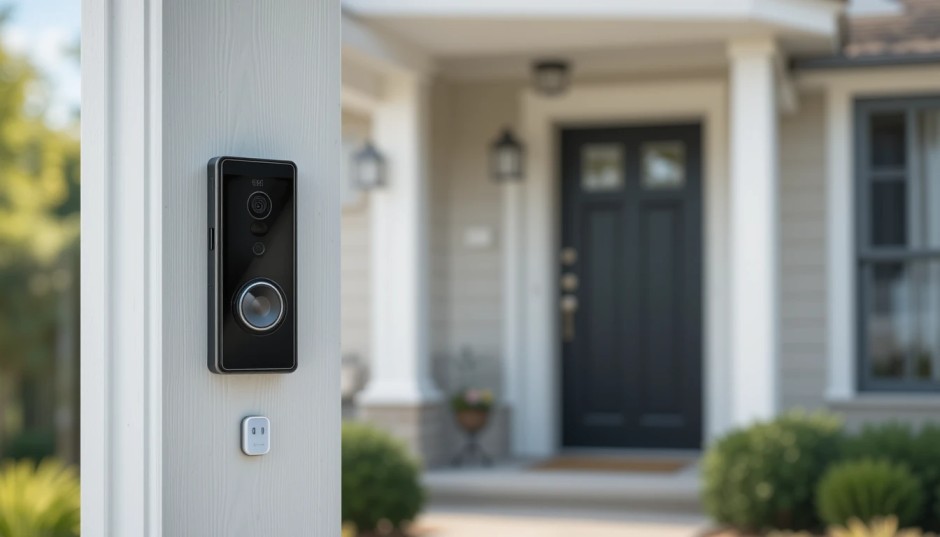What Are the Top Security Features to Consider in Smart Home Devices Today?

Strong 8k brings an ultra-HD IPTV experience to your living room and your pocket.
Smart homes are the future. But with all that convenience—turning on your lights with a voice command, watching your dog via a smart camera, or unlocking your door from miles away—comes one big, flashing question: Is your smart home secure enough?
As our devices get smarter, so do the hackers. That’s why securing your home network and connected gadgets is no longer optional—it's essential.
Why Security Matters in Smart Homes
Picture this: someone hacks into your smart door lock and opens your front door without you knowing. Or worse, a hacker accesses your security cam and watches your every move.
Scary? Yep. Real? Absolutely.
Cybercriminals are now targeting home networks because many smart home devices come with weak default passwords or outdated security protocols. If your device connects to Wi-Fi, it’s a potential target.
Top Security Features to Look for
Let’s dive into the most important features you should look for when buying or setting up a smart home device.
1. End-to-End Encryption
Think of encryption like sealing your message in a vault. It ensures that only the sender and receiver can read your data.
- Why it matters: Without encryption, hackers can intercept sensitive data.
- Look for: Devices that use AES-256 encryption or SSL/TLS for secure data transfer.
2. Two-Factor Authentication (2FA)
Your password alone isn’t enough anymore.
- What it is: A second layer of security—usually a code sent to your phone.
- Benefit: Even if someone guesses your password, they can’t log in without the second factor.
3. Regular Firmware Updates
Would you leave your front door open? That’s what outdated firmware does.
- Why updates matter: Developers patch security flaws through updates.
- What to check: Does the device auto-update or notify you?
4. Secure Cloud Storage
Not all clouds are created equal.
- Pros: Offloads data storage from local devices.
- Cons: If not encrypted, cloud-stored data can be hacked.
- Tip: Choose brands that use encrypted cloud storage and offer local backup options.
5. Device Authentication Protocols
Don’t let rogue devices join your network.
- MAC address filtering: Only allows whitelisted devices.
- Device fingerprinting: Identifies devices based on their behavior and hardware.
6. Local Data Processing
Keep your sensitive data where it belongs—inside your home.
- Why it's great: No need to send everything to the cloud.
- Ideal for: Smart cameras, speakers, and thermostats.
7. Privacy Modes & Permissions Control
Sometimes your device should just shut up and mind its own business.
- Voice assistant tip: Use mute buttons on smart speakers.
- Camera trick: Get models with physical lens covers.
8. Role-Based Access Control (RBAC)
Give your kids smart TV access—but not control over the front door.
- Why it's crucial: Limits who can do what.
- Use case: Admin vs. guest vs. child user profiles.
9. Activity Logs & Alerts
Think of it like a digital diary for your devices.
- Purpose: Keeps track of who accessed what and when.
- Bonus: Immediate alerts for strange behavior.
10. Geofencing Capabilities
Let your house react to your location.
- How it works: Devices turn on/off based on your phone’s location.
- Security advantage: Automatically lock doors or activate cameras when you leave home.
11. Secure Mobile App Interface
Your phone is the command center—secure it well.
- Red flags: Apps asking for unnecessary permissions.
- Green flags: Apps with encrypted data transmission and app-specific passwords.
12. Integration with Trusted Platforms
Choose devices that play nice with others—and do it safely.
Top platforms: Apple HomeKit, Google Home, Amazon Alexa.
Why: These ecosystems often enforce strict security protocols.
13. Tamper Detection and Physical Security
Your smart lock shouldn’t give up just because someone shakes it.
- Must-haves: Tamper alerts, sirens, anti-pry shields.
- Good for: Smart locks, safes, and outdoor cameras.
14. Smart Firewall and Network Monitoring
Keep the bad guys out—before they even get close.
- Smart firewall: Acts as a bouncer for your home network.
- Network monitoring: Tracks suspicious activity 24/7.
15. User Education and Documentation
Even the best devices can’t help if you don’t use them right.
- What to look for: Easy-to-understand manuals, FAQs, and setup videos.
- Tip: Opt for brands that offer strong customer support.
Choosing the Right Smart Home Security Setup
Before buying smart home gear, ask yourself:
- Do I need it to work offline?
- How much control do I want over who accesses it?
- Is the brand known for timely updates?
Make a checklist of must-have features (like 2FA and encryption) and only buy what meets those needs.
Future Trends in Smart Home Security
AI is helping devices recognize unusual behavior and auto-block threats. Meanwhile, blockchain is gaining popularity for secure identity verification and tamper-proof logs.
The future’s looking smarter—and safer—if you keep up.
Conclusion
Smart home devices are here to stay. But don’t let convenience come at the cost of security. With the right features—like encryption, 2FA, and secure cloud storage—you can enjoy your tech without worrying about your privacy being compromised.
So before you connect that next smart plug or camera, ask: Is it safe enough for my home?
Note: IndiBlogHub features both user-submitted and editorial content. We do not verify third-party contributions. Read our Disclaimer and Privacy Policyfor details.


